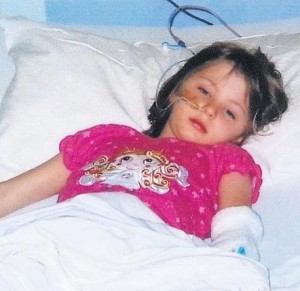I applaud the event coordinators for the Northwest Washington Fair for making health and safety a priority following an outbreak of shiga toxin-producing E. coli in April that sickened at least 25.Second Opinions: Necessary or Not?
 Whatcom County Health Department (WCHD) inspectors confirmed in June the outbreak originated in a barn at the fairgrounds. In light of this, Steve VanderYacht, president of the fair’s board of directors, said the fair organizers aren’t taking any chances.
Whatcom County Health Department (WCHD) inspectors confirmed in June the outbreak originated in a barn at the fairgrounds. In light of this, Steve VanderYacht, president of the fair’s board of directors, said the fair organizers aren’t taking any chances.
“This year’s focus at the fair is health and safety,” he said. “Through our close consultations with the health department and outside groups, we’ve learned that the surest way to prevent the spread of E. coli is through proper, thorough and frequent handwashing, so we’re doing everything we can to make sure our visitors have the access and tools necessary to do so.”
Event staff were trained as “hand washing ambassadors” during a special training session on August 12. Hand washing ambassadors will man three of the hand-washing stations to teach proper technique to families and kids. As an extra incentive, kids who visit all three stations earn the chance to win prizes.
But handwashing is never enough.
In 2013, 49 were sickened with shiga toxin-producing E. coli at the Ekka, Queensland’s state fair in Brisbane. STEC genes were detected in the bedding of animals in the Ekka’s nursery.
Go hang out at petting zoos or the exhibits at county and state fairs and watch what little kids do; we have. So have others.
And while some studies suggest inadequate handwashing facilities may have contributed to enteric disease outbreaks or washing hands was protective against illness, others suggest relevant infectious agents may be aerosolized and inhaled.
In the fall of 2009, an E. coli O157:H7 outbreak at Godstone Petting Farm in the U.K resulted in 93 illnesses – primarily little kids.
 The investigation into the Godstone outbreak identified evidence of environmental contamination outside the main barn, indicating acquisition of illness through both direct animal or fecal contact, and indirect environmental contact (e.g. contacting railings or soiled footwear).
The investigation into the Godstone outbreak identified evidence of environmental contamination outside the main barn, indicating acquisition of illness through both direct animal or fecal contact, and indirect environmental contact (e.g. contacting railings or soiled footwear).
Aerosolization of potential pathogens is also possible, as suggested in an E. coli O157:H7 outbreak at a county fair in Oregon, in which 60 people fell ill.
Ihekweazu et al. subsequently concluded that in the Godstone outbreak,
“handwashing conferred no demonstrable protective effect. …
“Moreover, from the findings of many previous published studies, it must be assumed that all petting or open farms are potentially high-risk environments for the acquisition of VTEC O157 infection (an STEC).”
A table of petting zoo outbreaks is available at https://barfblog.com/wp-content/uploads/2014/04/Petting-Zoo-Outbreaks-Table-4-8-14.xlsx., and a list of risk factors at petting zoos and animal contact events at fairs can be found in: Erdozain G, Kukanich K, Chapman B, Powell D. 2012. Observation of public health risk behaviours, risk communication and hand hygiene at Kansas and Missouri petting zoos – 2010-2011. Zoonoses Public Health.
